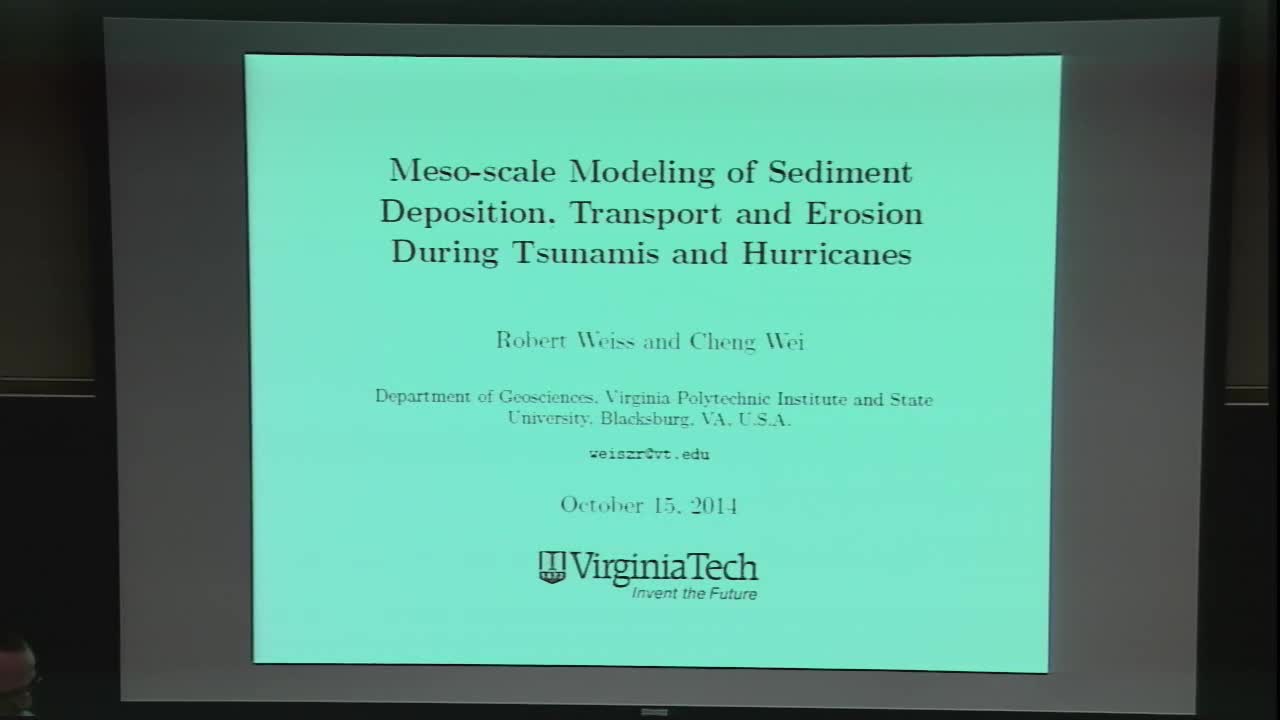Meso-scale Modeling of Sediment Deposition, Transport and Erosion During Tsunamis and Hurricanes
Presenter
October 15, 2014
Keywords:
- Flow dynamic
MSC:
- 37D40
Abstract
Conventionally, two-dimensional and depth-averaged methods have been employed to
simulate the sediment deposition, transport and erosion in tsunamis and storms.
The simulations of the sediment dynamics for both events has the advantage that
we learn about the interaction of the respective flow and the movable bed in
general, but if done with consistent methods we can also learn about the
differences in sediment dynamics between tsunami and storms. The difference then
becomes important to understand the different features that storm and tsunami
deposits exhibit for modern deposits of both events as well as in the geologic
record. Unfortunately, there seem to be no consistent difference in the
characteristics of both deposits. Furthermore, our current understanding of
sediment dynamics may not be sufficient to catch the differences that apparently
exit between the flow dynamics during storms and tsunamis.
We argue that a new smaller-scale framework is needed to improve our
understanding of sediment dynamics in storms and tsunamis for identifying the
differences in the resultant deposits. The ultimate goal is to simulate sediment
deposition, transport and erosion on a grain by grain basis. However such an
endeavor is computationally and physically challenging. We propose a meso-scale
approach with is a hybrid of the particle and concentration paradigm. In our
model, we assume that a number of grains travel together, and this cluster of
grains can be treated as particle as it moves through the water column. The
equation of motion for the grain-cluster particle is, of course, Newtons Second
Law of motion.
We present the first results with this new model approach. We show that the model
reproduces the general macroscopic differences between storm and tsunami
deposits. Furthermore we look at the internal structures of storm and tsunami
deposits and demonstrate the advantages, limitations, and challenges of this new
approach. Please note this is work in progress.
